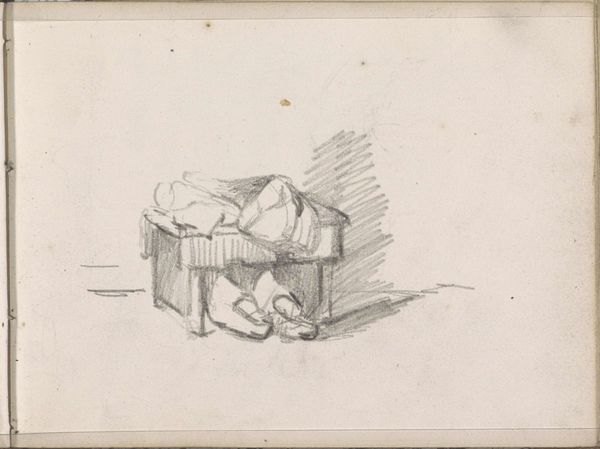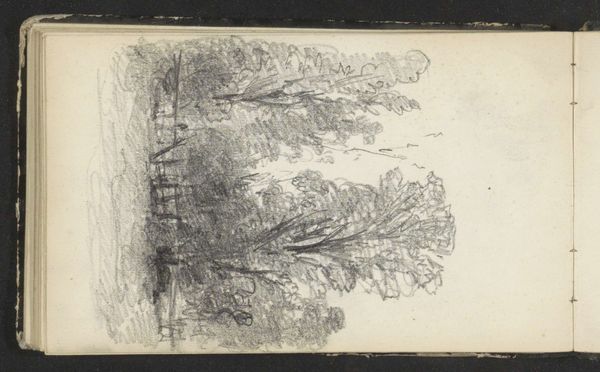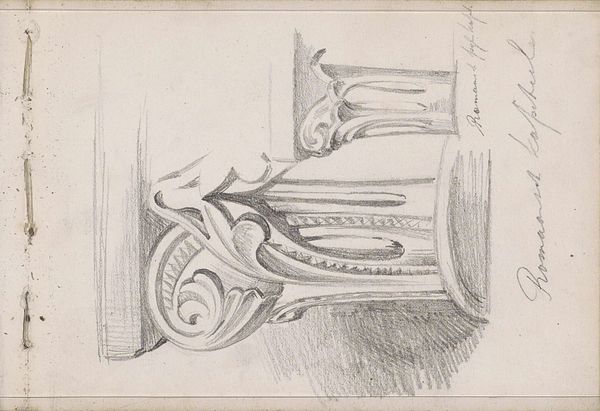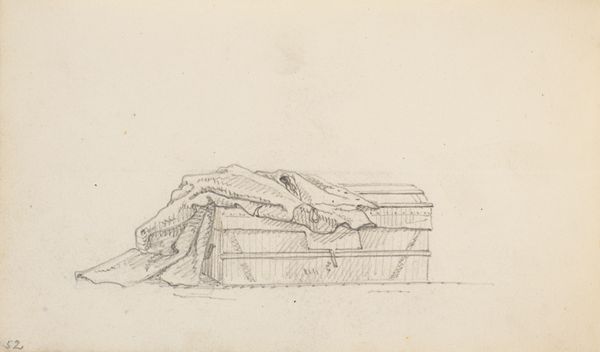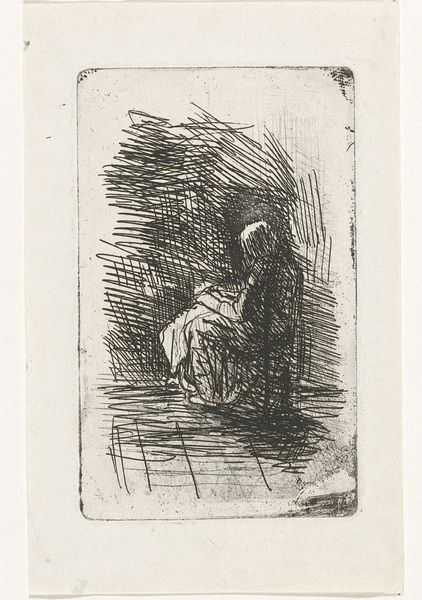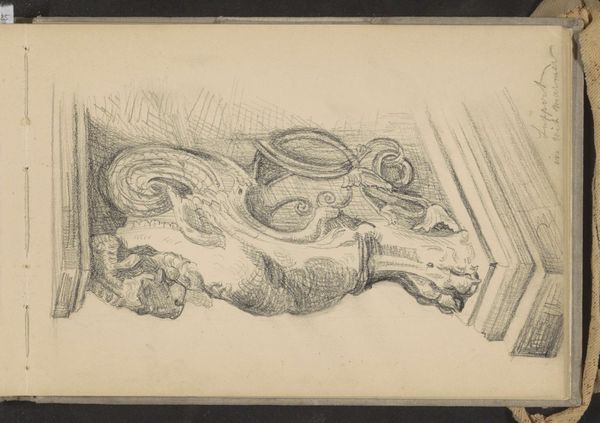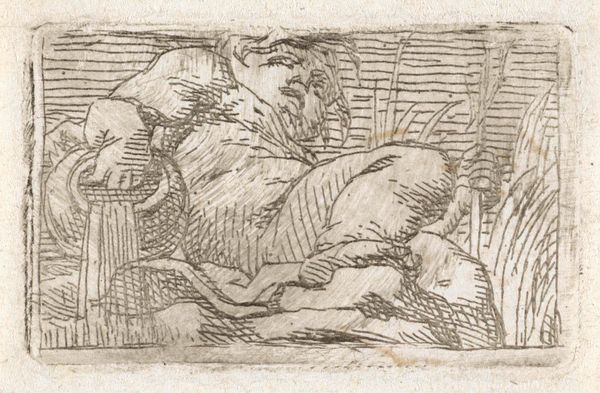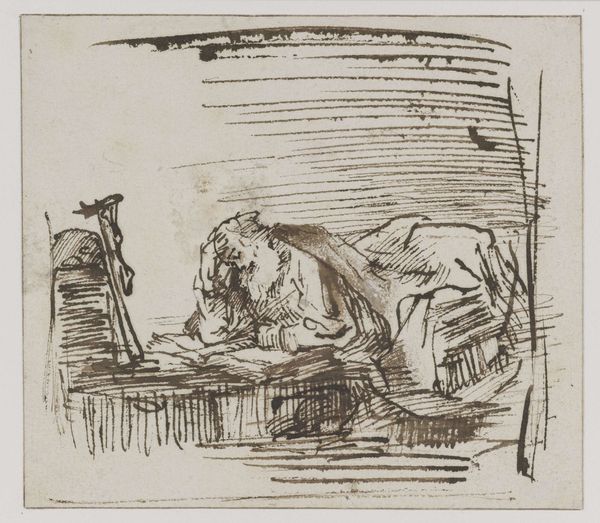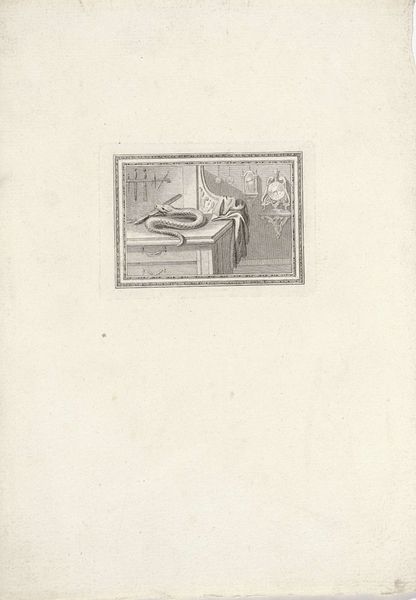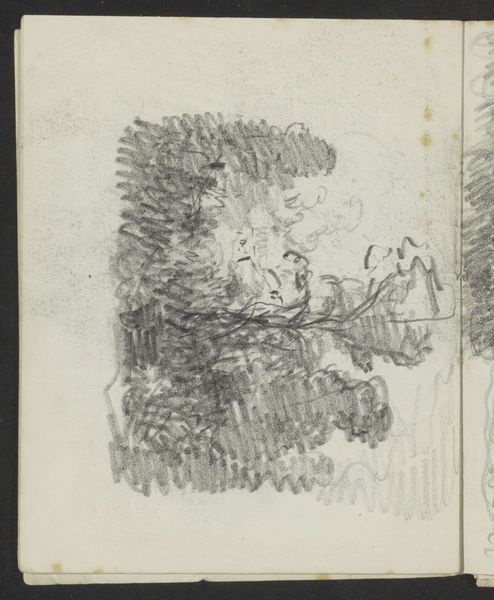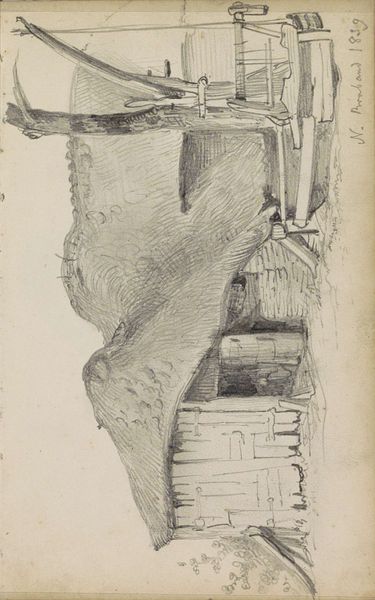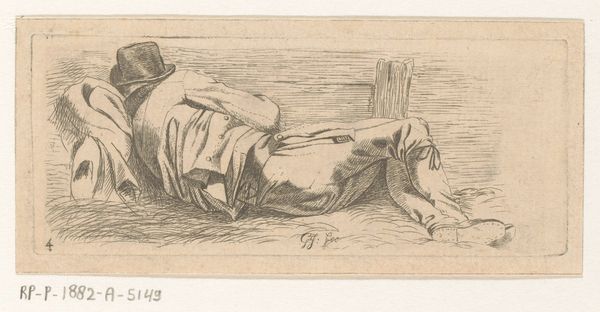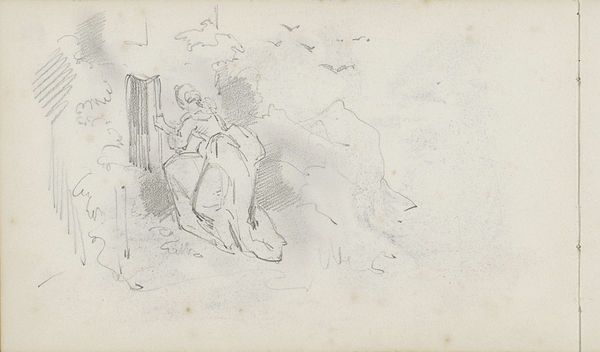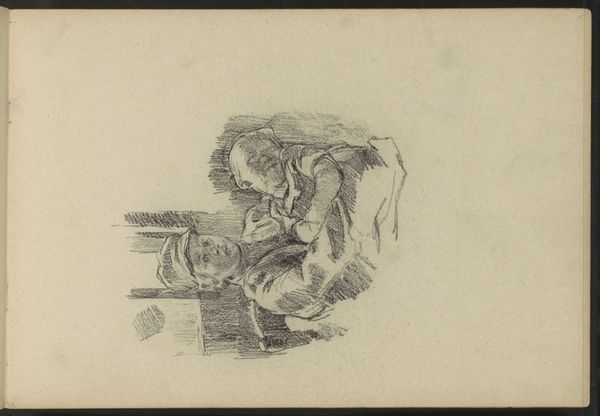
drawing, print, engraving
#
drawing
# print
#
book
#
pencil sketch
#
old engraving style
#
personal sketchbook
#
pencil drawing
#
geometric
#
line
#
engraving
Dimensions: height 52 mm, width 81 mm
Copyright: Rijks Museum: Open Domain
Curator: This intriguing print is called "Open Book on a Table," attributed to Isaac Weissenbruch, likely created sometime between 1860 and 1899. It’s currently held in the Rijksmuseum collection. Editor: The texture is remarkable, almost overwhelming! Look at the obsessive detail in the cross-hatching. The overall effect, despite the mundane subject matter, is almost claustrophobic, definitely intense. Curator: The intensity stems in part from the lines themselves—notice how the linear design shapes every element. Consider, also, that engraving was historically used to reproduce images for mass consumption, reflecting print culture’s expansion. Editor: It certainly captures that. You can practically smell the printer's ink! What intrigues me, though, is the subject itself—a large, open book, positioned prominently on what appears to be a draped table. Who would the audience be for such an intimate glimpse? Curator: The image evokes the personal and the political, in my view. Books themselves represented knowledge, power, and access in the 19th century. A genre scene with implications of the intellectual milieu of the period. Editor: So, are we meant to consider how reading shapes public discourse? Is this a call to intellectualism, subtly urging viewers to participate actively in civic life? Curator: Perhaps both. Remember that access to literature and information wasn't universal at this time. Presenting an open book hints at the transformative potential within reach, an invitation to education. Editor: On a simpler note, the object embodies pure form. We see a composition in blacks and whites and geometric interplay. The way the pages curl is like architecture. Curator: Your close reading highlights something critical about such artworks: they are not simply representations of something 'out there’ in the social sphere. It offers visual experience through contrasts of tone, line, and form, evoking deeper ideas and impressions. Editor: Yes, it is hard to overlook how Weissenbruch uses shape, shading, and composition for emotional depth beyond social messaging. Well, this look into the art gives us some rich areas for further contemplation. Curator: I agree, a work such as this certainly inspires us to consider context and craft and, in so doing, re-engage with the artwork's visual elements, allowing deeper interpretations to come into view.
Comments
No comments
Be the first to comment and join the conversation on the ultimate creative platform.
